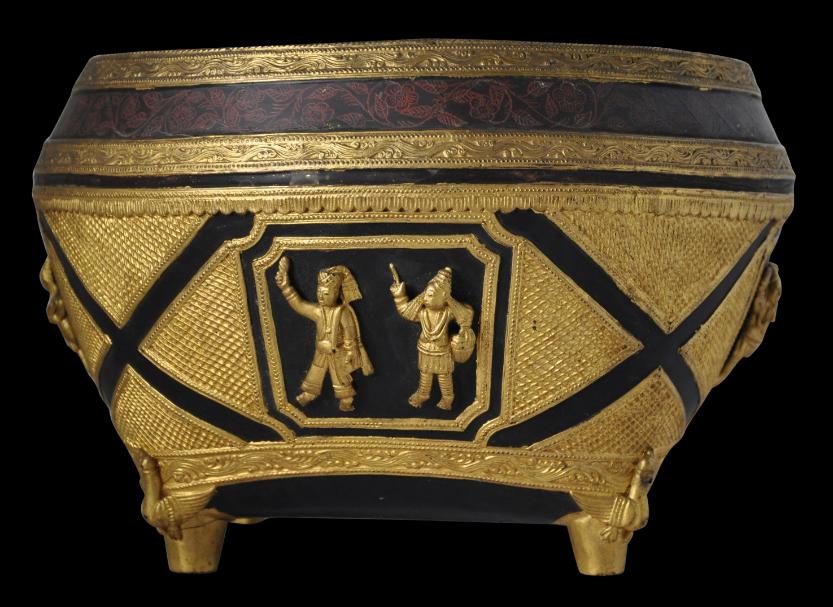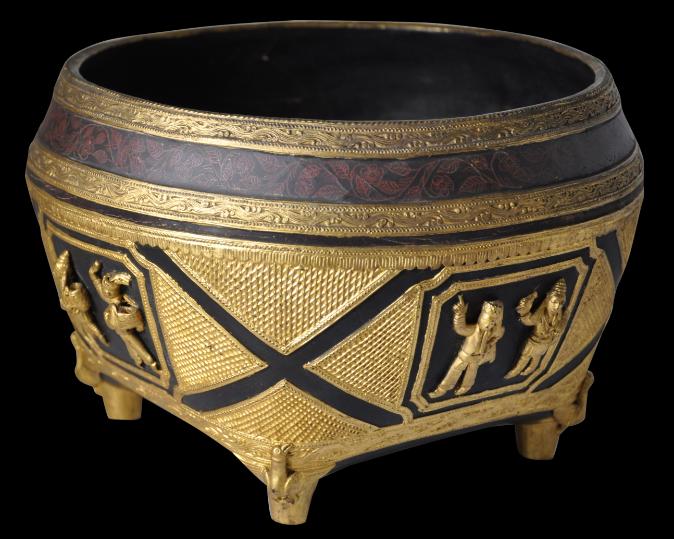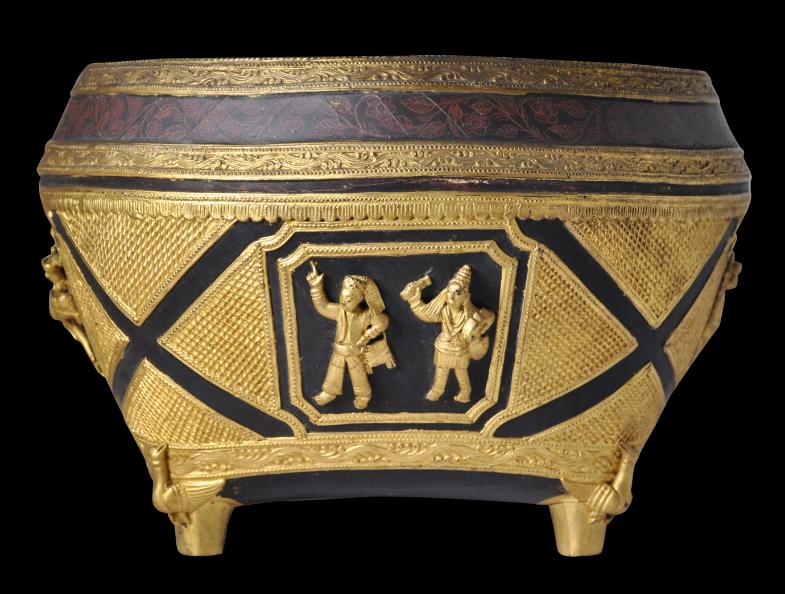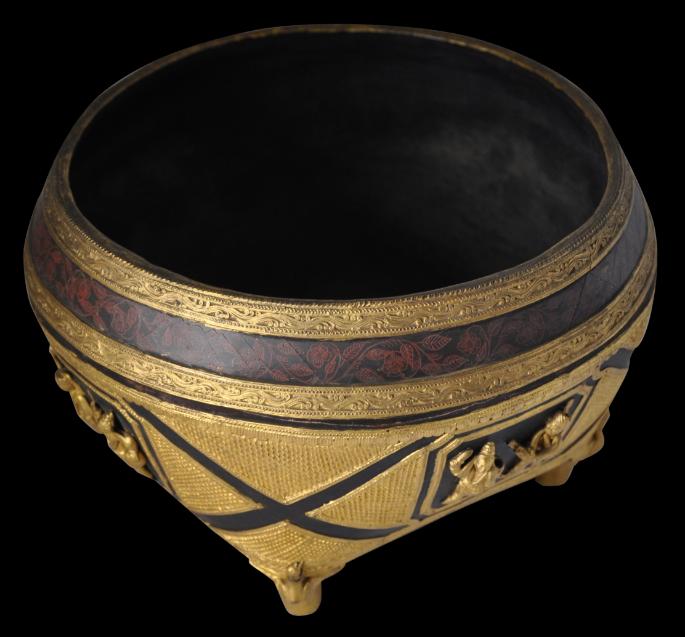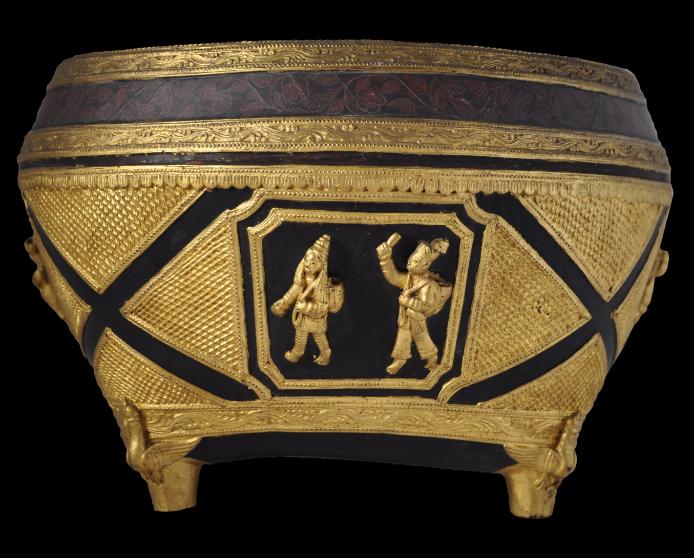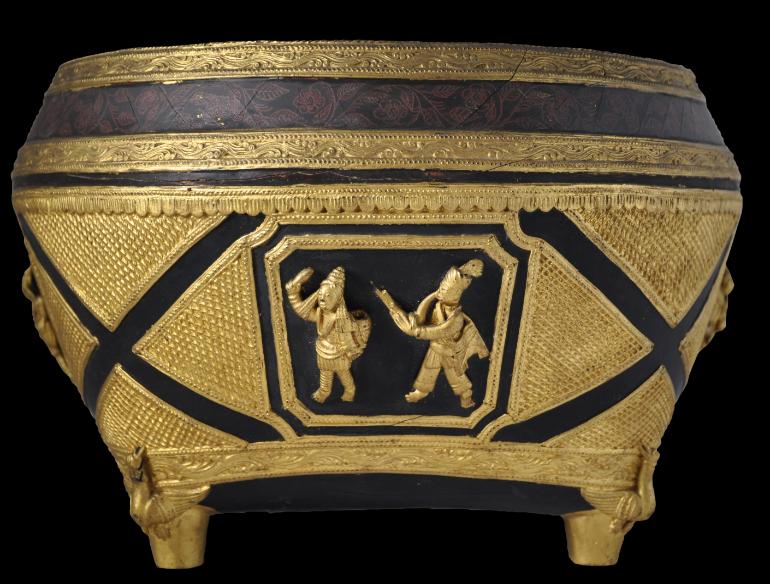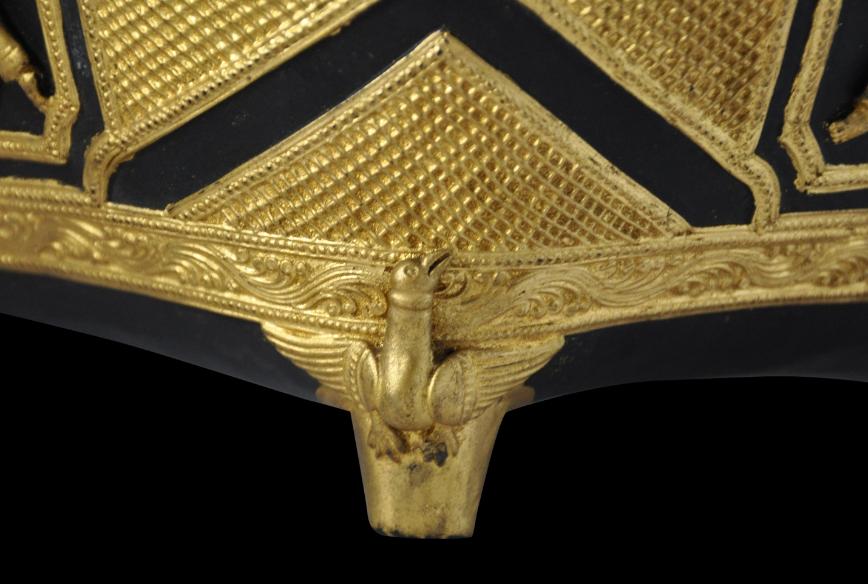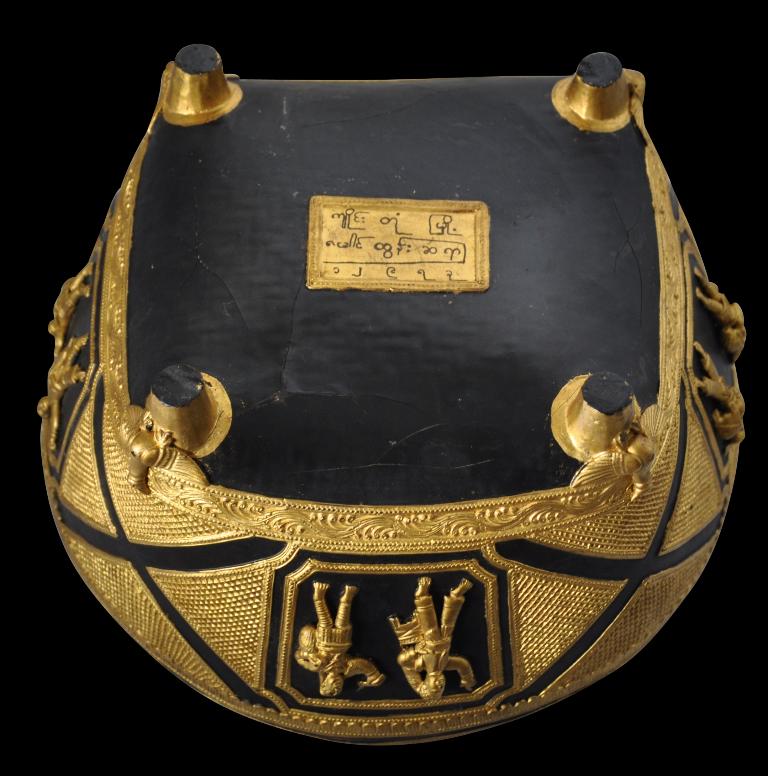
Lacquer Bowl, Kengtung Burma, dated 1935
Ceremonial Gold Leaf & Lacquer Bowl (Ko Kau Tu) by Hsaya (Master) Maung Htun
Kengtung, Shan States, Burma
dated 1935
diameter: 21.5cm, height: 14cm
This superb example of a Kengtung Burmese lacquered bowl is notable for its unusual styling, and for its excellent condition.
Superbly executed in black and red lacquer and gilding over a woven bamboo base, the bowl has four gilded (from high-carat gold leaf) panels of pairs of figures in high-relief dressed in indigenous costume of Kengtung and surrounding areas including the Akha, Khun, Lahu and Khamu, against a black ground, interspersed with broad, rectangular gold panels decorated unusually with a cross in black lacquer. Singer (1991) concludes that each of the costumed figures used to decorate such bowls was not the product of moulds but in fact were made individually by hand.
Both a thin, gilded border towards the top, and a thin border towards the base, are decorated with
thayo work – a process whereby thin, rolled strands of lacquer and ash putty are applied in patterns.
The top also has a band that has been lightly etched and decorated with red lacquer to provide a frieze of leaf and flower scrollwork. This is the first time we have encountered such decoration on a Kengtung lacquered bowl, published or otherwise.
The feet are decorated with crows, wings outstretched. The crow is thought to be associated with legends relating to the founding of Kengtung (Fraser-Lu, 2000).
The base is decorated with a gilded cartouche that has
thayo in Burmese script – it names the maker as Hsaya Maung Htun (Hsaya being the term for ‘Master’) – and has another crow in high relief. The cartouche also includes a date, for which the western equivalent is 1935, and lists the place of manufacture as ‘Keng Tung Town’.
Surviving Kengtung bowls of this type are relatively rare and those that are in good condition are rarer still. This example is in particularly fine condition: there is only the most minor cracking to the lacquer and the odd small area of blemish. There are no repairs or losses.
Kengtung became known for producing lacquerware rice baskets (
ko-kau-te) that originally started out plain but became elaborately embellished with medallions, bands of scrolling foliage and human figures in indigenous costume in the first part of the twentieth century. Originally such baskets were used to hold rice flour at religious festivals, and also were used as presentation pieces. Bowls made using this technique are illustrated in Fraser-Lu (222, p. 165-6), Isaacs & Blurton (2000), Conway (2006, p. 135), and Singer (1991).
Kengtung was the largest and eastern-most of the Shan states and was ruled by a prince from the Tai Khoen ethnic group. It has had a small lacquerware industry since the eighteenth century.
References:
Conway, S., The Shan: Culture, Arts & Crafts, River Books, 2006.
Fraser-Lu, S.,
Burmese Crafts: Past and Present, Oxford University Press, 1994.
Fraser-Lu, S.,
Burmese Lacquerware, White Orchid Books, 2000.
Isaacs, R., & T.R. Blurton,
Burma and the Art of Lacquer, River Books, 2000.
Singer, N., ‘Jengtung Lacquerware’ in
Arts of Asia, September-October 1991.
Provenance
private collection, London.
Inventory no.: 4247
SOLD

